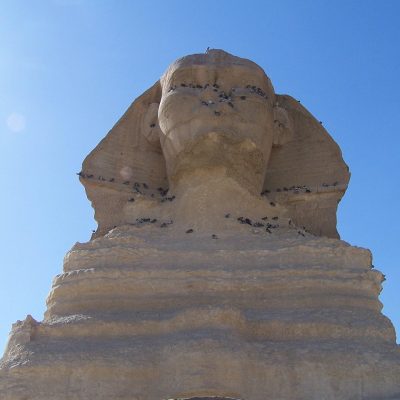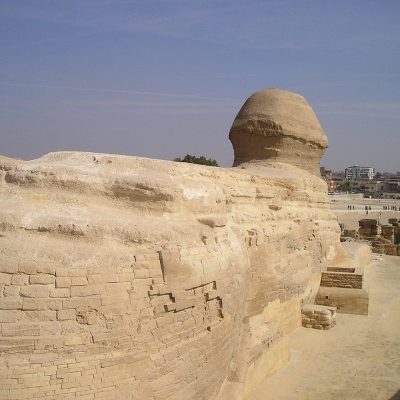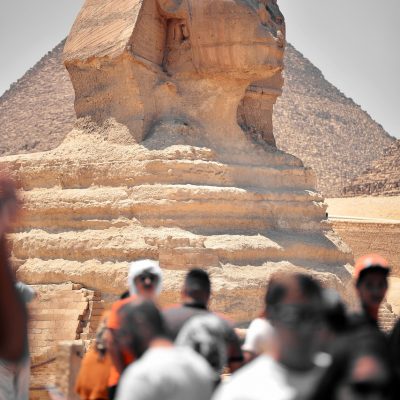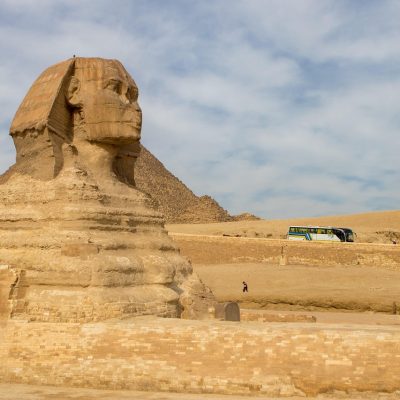The Great Sphinx of Giza
The Great Sphinx is one of the most iconic statues in the world, symbolizing ancient Egyptian strength and wisdom. It stands guard at the base of the Pyramid of Khafre, with the body of a lion and the head of a human, believed to represent Pharaoh Khafre himself.
Dimensions: The Sphinx is approximately 20 meters tall and 73 meters long, making it the largest monolithic statue in the world. The statue’s body represents the lion, a symbol of power and kingship, while the human face signifies wisdom and intelligence.
Historical Significance: The Sphinx is thought to have been constructed during the reign of Pharaoh Khafre, around 2500 BCE. The exact purpose of the Sphinx remains a mystery, with some theories suggesting that it was built as a guardian of the pyramids and a symbol of divine protection. Its face is believed to resemble Khafre, but erosion and damage over the years have led to debates about its original appearance.
Restoration Efforts: The Sphinx has undergone several restoration projects, especially in recent decades, to preserve it against further erosion from wind, sand, and pollutants. Despite the restoration efforts, much of its original limestone casing has worn away, and parts of its face have been damaged over time.



